Nissan Ariya vs Kia EV4 Hatchback - Differences and prices compared
Costs and Efficiency:
When it comes to price and running costs, the biggest differences usually appear. This is often where you see which car fits your budget better in the long run.
Kia EV4 Hatchback has a somewhat advantage in terms of price – it starts at 32200 £, while the Nissan Ariya costs 37300 £. That’s a price difference of around 5057 £.
In terms of energy consumption, the advantage goes to the Kia EV4 Hatchback: with 14.90 kWh per 100 km, it’s slightly more efficient than the Nissan Ariya with 17.70 kWh. That’s a difference of about 2.80 kWh.
As for range, the Kia EV4 Hatchback performs slightly better – achieving up to 625 km, about 94 km more than the Nissan Ariya.
Engine and Performance:
Under the bonnet, it becomes clear which model is tuned for sportiness and which one takes the lead when you hit the accelerator.
When it comes to engine power, the Nissan Ariya has a significantly edge – offering 435 HP compared to 204 HP. That’s roughly 231 HP more horsepower.
In acceleration from 0 to 100 km/h, the Nissan Ariya is convincingly quicker – completing the sprint in 5 s, while the Kia EV4 Hatchback takes 7.40 s. That’s about 2.40 s faster.
In terms of top speed, the Nissan Ariya performs to a small extent better – reaching 200 km/h, while the Kia EV4 Hatchback tops out at 170 km/h. The difference is around 30 km/h.
There’s also a difference in torque: Nissan Ariya pulls significantly stronger with 600 Nm compared to 283 Nm. That’s about 317 Nm difference.
Space and Everyday Use:
Whether family car or daily driver – which one offers more room, flexibility and comfort?
Seats: offers more seating capacity – vs .
In curb weight, Kia EV4 Hatchback is hardly perceptible lighter – 1811 kg compared to 1980 kg. The difference is around 169 kg.
In terms of boot space, the Nissan Ariya offers minimal more room – 468 L compared to 435 L. That’s a difference of about 33 L.
In maximum load capacity, the Kia EV4 Hatchback performs slight better – up to 1415 L, which is about 65 L more than the Nissan Ariya.
When it comes to payload, Kia EV4 Hatchback minimal takes the win – 459 kg compared to 420 kg. That’s a difference of about 39 kg.
Who comes out on top?
Overall, the Nissan Ariya shows itself to be dominates this comparison and secures the title of DriveDuel Champion.
It convinces with the more balanced overall package and proves to be the more versatile choice for everyday use.
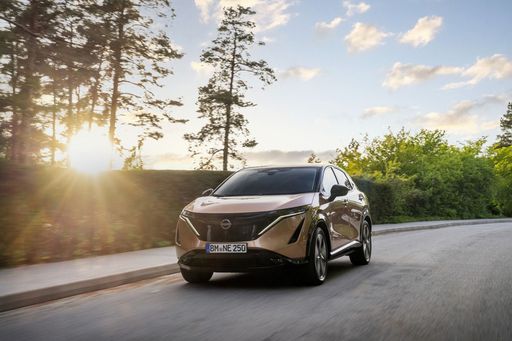 @ Nissan Motor Corporation
@ Nissan Motor Corporation
Nissan Ariya
Costs and Consumption
View detailed analysis
Engine and Performance
View detailed analysis
Dimensions and Body
View detailed analysis
Nissan Ariya
The Nissan Ariya wraps futuristic, sculpted styling around a calm, high-tech cabin, making the switch to electric feel surprisingly easy and grown-up. It’s a comfortable, sensible EV that favors everyday usability and clever packaging over headline-grabbing theatrics — ideal for buyers who want an elegant, low-fuss electric car without the ego.
details @ Nissan Motor Corporation
@ Nissan Motor Corporation
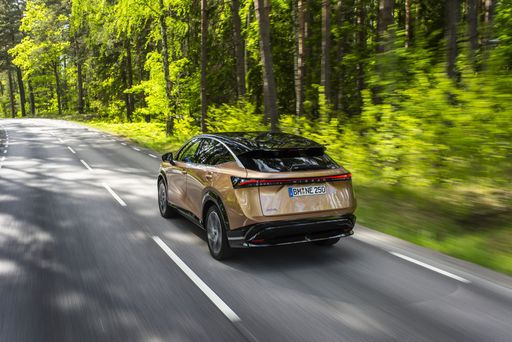 @ Nissan Motor Corporation
@ Nissan Motor Corporation
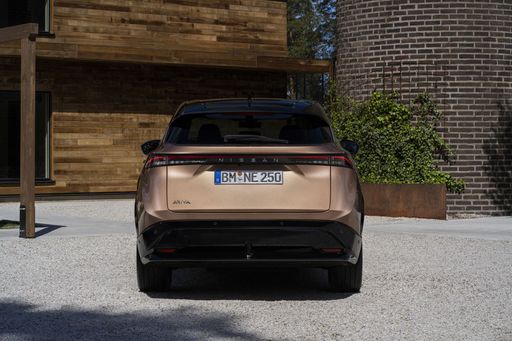 @ Nissan Motor Corporation
@ Nissan Motor Corporation
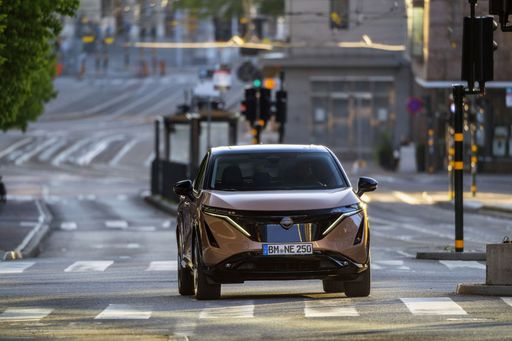 @ Nissan Motor Corporation
@ Nissan Motor Corporation
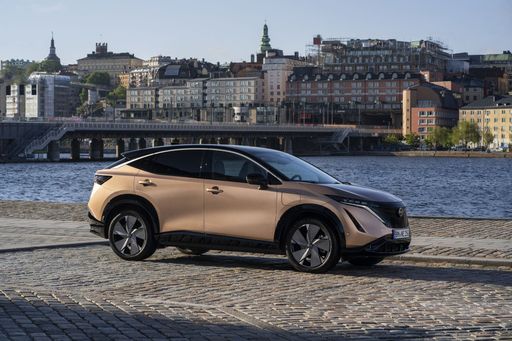 @ Nissan Motor Corporation
@ Nissan Motor Corporation
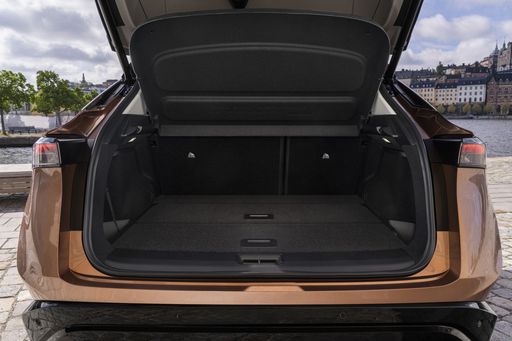 @ Nissan Motor Corporation
@ Nissan Motor Corporation
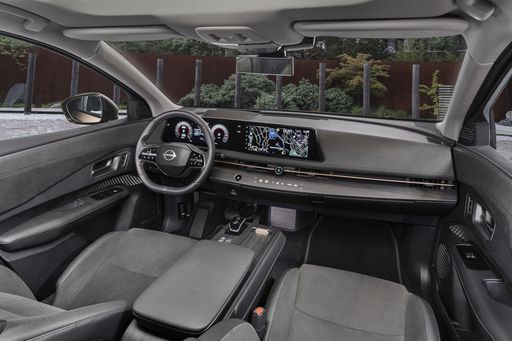 @ Nissan Motor Corporation
@ Nissan Motor Corporation
Kia EV4 Hatchback
The Kia EV4 Hatchback paves the way for a sleek and efficient driving experience, capturing attention with its modern design and eco-friendly performance. Built with comfort and sustainability in mind, this hatchback redefines electric mobility for urban explorers and suburban commuters alike. Inside, the EV4 boasts a spacious and tech-savvy interior, offering drivers and passengers a seamless blend of innovation and practicality.
details
 @ Nissan Motor Corporation
@ Nissan Motor Corporation
|
|
|
|
|
Costs and Consumption |
|
|---|---|
|
Price
37300 - 54800 £
|
Price
32200 - 42400 £
|
|
Consumption L/100km
-
|
Consumption L/100km
-
|
|
Consumption kWh/100km
17.7 - 24.5 kWh
|
Consumption kWh/100km
14.9 - 16.2 kWh
|
|
Electric Range
402 - 531 km
|
Electric Range
440 - 625 km
|
|
Battery Capacity
63 - 87 kWh
|
Battery Capacity
58.3 - 81.4 kWh
|
|
co2
0 g/km
|
co2
0 g/km
|
|
Fuel tank capacity
-
|
Fuel tank capacity
-
|
Dimensions and Body |
|
|---|---|
|
Body Type
SUV
|
Body Type
Hatchback
|
|
Seats
5
|
Seats
5
|
|
Doors
5
|
Doors
5
|
|
Curb weight
1980 - 2277 kg
|
Curb weight
1811 - 1910 kg
|
|
Trunk capacity
415 - 468 L
|
Trunk capacity
435 L
|
|
Length
4595 mm
|
Length
4430 - 4450 mm
|
|
Width
1850 mm
|
Width
1860 mm
|
|
Height
1650 mm
|
Height
1485 mm
|
|
Max trunk capacity
1280 - 1350 L
|
Max trunk capacity
1415 L
|
|
Payload
363 - 420 kg
|
Payload
445 - 459 kg
|
Engine and Performance |
|
|---|---|
|
Engine Type
Electric
|
Engine Type
Electric
|
|
Transmission
Automatic
|
Transmission
Automatic
|
|
Transmission Detail
Reduction Gearbox
|
Transmission Detail
Reduction Gearbox
|
|
Drive Type
Front-Wheel Drive, All-Wheel Drive
|
Drive Type
Front-Wheel Drive
|
|
Power HP
218 - 435 HP
|
Power HP
204 HP
|
|
Acceleration 0-100km/h
5 - 7.6 s
|
Acceleration 0-100km/h
7.4 - 7.8 s
|
|
Max Speed
160 - 200 km/h
|
Max Speed
170 km/h
|
|
Torque
300 - 600 Nm
|
Torque
283 Nm
|
|
Number of Cylinders
-
|
Number of Cylinders
-
|
|
Power kW
160 - 320 kW
|
Power kW
150 kW
|
|
Engine capacity
-
|
Engine capacity
-
|
General |
|
|---|---|
|
Model Year
2022 - 2025
|
Model Year
2025
|
|
CO2 Efficiency Class
A
|
CO2 Efficiency Class
A
|
|
Brand
Nissan
|
Brand
Kia
|
What drivetrain options does the Nissan Ariya have?
The Nissan Ariya is offered with Front-Wheel Drive or All-Wheel Drive.
The prices and data displayed are estimates based on German list prices and may vary by country. This information is not legally binding.
